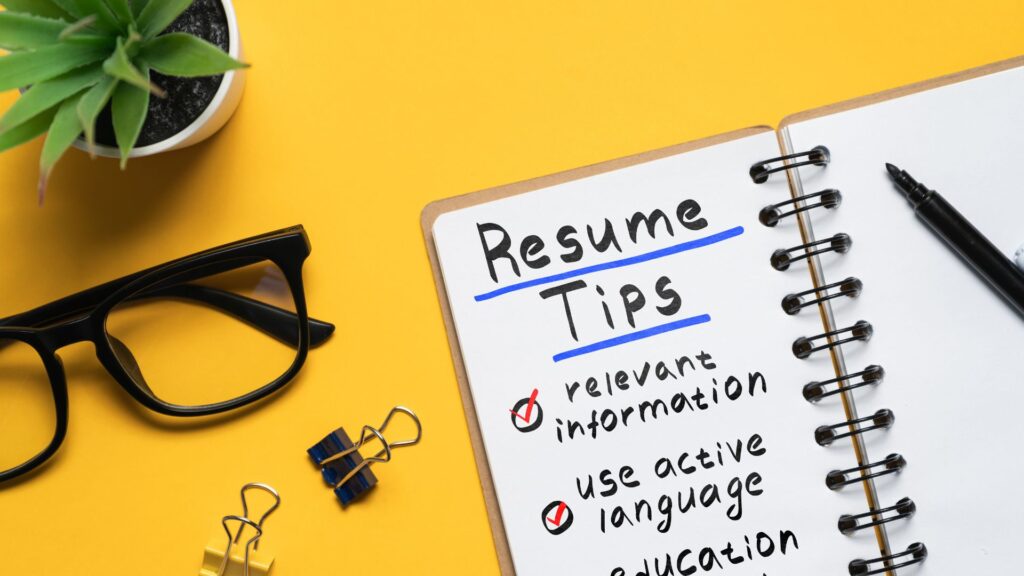Mastering the Art of Interviewing: Techniques for Identifying Top Talent

Table of Contents
ToggleThe challenge of identifying top talent
The objective of mastering the art of interviewing
How to Screen Resumes Effectively
The Preparation Process: Laying the Foundation for Successful Interviews
An effective interview begins long before the actual meeting with the candidate. Proper preparation is critical to ensure that the interview process runs smoothly and elicits the information needed to make an informed hiring decision. This section will explore the essential steps to take when preparing for an interview, from understanding the job requirements to developing clear and concise interview questions.
A. Understanding the job requirements and desired qualifications
- Reviewing the job description: Familiarize yourself with the specific responsibilities, tasks, and expectations associated with the role. This will enable you to identify the key skills and competencies needed for success in the position.
- Collaborating with stakeholders: Consult with team members, managers, and other stakeholders who will be working closely with the new hire to gain insights into the qualifications and attributes they value in a candidate.
- Defining the ideal candidate profile: Based on the job description and stakeholder input, create a clear and concise profile of the ideal candidate. This profile should outline the necessary skills, experience, education, and personal traits that will best fit the role and your organization’s culture.
B. Creating a structured interview format
- Establish a consistent order of topics: Outline the main areas you want to cover during the interview, such as work history, technical skills, soft skills, and cultural fit. Stick to this order for all candidates to facilitate easier comparison and evaluation.
- Allocate time for each section: Determine the amount of time you will spend on each topic, and be mindful of this as you progress through the interview. This will help you stay focused and ensure that you cover all the critical areas.
- Develop a rating system: Implement a standardized rating system to objectively evaluate each candidate based on their responses to interview questions. This can include a numerical scale, letter grades, or descriptive categories (e.g., excellent, satisfactory, poor).
C. Developing clear and concise interview questions
- Align questions with the job requirements: Ensure that each question is designed to assess a specific skill, competency, or attribute outlined in the ideal candidate profile.
- Use a mix of question types: Employ a variety of question formats, such as open-ended, behavioral, situational, and technical questions, to gain a comprehensive understanding of the candidate’s capabilities.
- Avoid leading or ambiguous questions: Craft questions that are clear and unbiased to avoid inadvertently steering the candidate’s response or causing confusion.
- Test your questions: Review your questions with a colleague or conduct a mock interview to ensure they are clear, relevant, and effective in eliciting the desired information.
The Different Types of Interviews: Choosing the Right Approach
A. Phone screening interviews
- Time and cost efficiency: Phone interviews are less time-consuming and expensive than in-person interviews, enabling you to evaluate a larger number of candidates in a shorter period.
- Flexibility: Scheduling is more straightforward, as candidates and interviewers can participate from virtually anywhere, making it easier to accommodate busy schedules.
- Narrowing the candidate pool: Phone screenings help identify strong candidates early in the process, allowing you to focus your efforts on those with the greatest potential.
B. In-person interviews
- Non-verbal communication: In-person interviews allow you to observe a candidate’s body language, eye contact, and overall demeanor, providing valuable insights into their confidence, professionalism, and interpersonal skills.
- Interaction with the team and work environment: Candidates can meet potential colleagues and experience the workplace firsthand, offering a better understanding of the company culture and helping both parties gauge compatibility.
C. Video interviews
- Cost and time savings: Video interviews eliminate the need for travel, saving both time and resources for both parties.
- Expanded talent pool: By removing geographical barriers, video interviews enable you to access a broader range of candidates, potentially leading to more diverse and qualified hires.
- Recording capabilities: Video interviews can be recorded and reviewed later, allowing for a more in-depth evaluation and easier sharing with other decision-makers.
D. Group interviews
- Efficiency: Group interviews allow you to assess multiple candidates at once, streamlining the hiring process.
- Observing interaction and collaboration: By watching candidates work together on tasks or engage in group discussions, you can gain insights into their interpersonal skills, leadership abilities, and team dynamics.
- Comparing candidates directly: Group interviews make it easier to identify standout candidates by observing how they perform alongside their peers.
E. Panel interviews
- Diverse perspectives: Panel interviews allow for input from various stakeholders, resulting in a more balanced and informed hiring decision.
- Consistency and efficiency: By having all interviewers present simultaneously, panel interviews ensure that each candidate is evaluated consistently and expedites the decision-making process.
- Assessing adaptability: Candidates must respond to questions from different interviewers with varying styles and areas of expertise, offering insights into their adaptability and ability to handle pressure.
The Post-Interview Process: Ensuring Thorough Candidate Evaluation
A. Rating and comparing candidates
- Review your notes and rating system: Reflect on the notes you took during the interviews and consult your rating system to objectively assess each candidate’s performance.
- Compare candidates based on relevant criteria: Focus on the specific skills, competencies, and attributes outlined in the ideal candidate profile to ensure a fair comparison.
- Involve stakeholders in the decision-making process: Share your findings and gather input from team members, managers, and other stakeholders involved in the hiring process to reach a well-rounded decision.
B. Conducting reference checks and verifying qualifications
- Contact professional references: Reach out to the candidate’s provided references to gain insights into their work history, performance, and interpersonal skills.
- Verify qualifications: Ensure the candidate possesses the necessary credentials, certifications, or licenses required for the role by checking with the relevant institutions or accrediting bodies.
- Perform background checks (if applicable): Depending on the nature of the position and company policy, consider conducting a background check to assess the candidate’s criminal history, credit history, or other relevant information.
C. The importance of timely follow-up and communication
- Keep candidates informed: Communicate with candidates throughout the hiring process, providing updates on their application status and expected timelines.
- Offer constructive feedback: When appropriate, provide feedback to unsuccessful candidates to help them improve in future interviews and maintain a positive perception of your company.
- Welcome the new hire: Once the successful candidate has been selected, extend a warm welcome and provide them with essential onboarding information to set them up for success in their new role.
Avoiding Common Interview Pitfalls: Overcoming Obstacles in the Interview Process
A. Biases and stereotypes in the interview process
- Recognize and challenge personal biases: Be aware of any unconscious biases you may have and actively work to overcome them during the interview process.
- Implement a structured interview format: As mentioned earlier, using a structured interview format can help minimize the impact of biases and ensure a fair evaluation of all candidates.
- Encourage diverse hiring panels: Include interviewers with diverse backgrounds and perspectives to reduce the likelihood of biases influencing the decision-making process.
B. Inadequate preparation leading to poor decision-making
- Thoroughly review the job requirements and desired qualifications: As discussed in the preparation process section, understanding the job requirements is critical to accurately assessing a candidate’s suitability for the role.
- Develop a clear and consistent interview plan: Create a structured interview format, develop well-crafted questions, and allocate sufficient time for each section to ensure a thorough evaluation.
- Seek input from stakeholders: Collaborate with team members, managers, and other stakeholders to gain a comprehensive understanding of the ideal candidate profile and desired qualifications.
C. Focusing too much on technical skills and overlooking soft skills
- Ask questions that assess both technical and soft skills: Develop a mix of questions that evaluate not only the candidate’s technical abilities but also their interpersonal, communication, and problem-solving skills.
- Evaluate cultural fit: Assess the candidate’s alignment with your company’s values and culture, as this can significantly impact their ability to work effectively within your organization.
- Consider the candidate’s potential for growth: Look for signs of adaptability, learning capacity, and a willingness to grow professionally, as these attributes can contribute to the candidate’s long-term success in the company.
Conclusion: Elevating Your Interviewing Skills to Attract Top Talent
FAQ about Interview Techniques
The top 5 interview techniques include active listening, asking open-ended questions, behavioral interviewing, situational interviewing, and using follow-up questions to dig deeper.
The 4 C’s of an interview are competence, compatibility, commitment, and character.
The best interview method varies depending on the job and the company’s needs. Some popular interview methods include structured interviews, behavioral interviews, and situational interviews.
The qualities of a good interviewer include being a good listener, being organized and prepared, being unbiased and objective, being able to build rapport with the interviewee, and being knowledgeable about the job and company.
To prepare for an interview, research the company and the job, review the job description, prepare responses to common interview questions, dress appropriately, bring a copy of your resume and a list of references, and practice good communication and body language.






